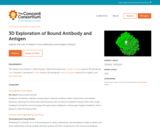
Explore the role of shape in how antibodies and antigens interact.
- Subject:
- Science
- Material Type:
- Simulation
- Provider:
- Concord Consortium
- Provider Set:
- Concord Consortium
- Author:
- Concord Consortium
- Date Added:
- 06/28/2022

Explore the role of shape in how antibodies and antigens interact.
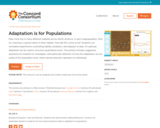
Deer mice live in many different habitats across North America. In each subpopulation, their fur coloring is a good match to their habitat. How did this come to be? Students run simulated experiments controlling habitat, predators, and displays of data. An optional datasheet can be used to structure quantitative work. The activity includes suggested questions for students to investigate, with particular attention to how the adaptation occurs solely at the population level, while natural selection operates on individuals.
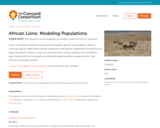
Learn to distinguish between exponential and logistic growth of populations, identify carrying capacity, differentiate density-dependent and density-independent limiting factors, apply population models to data sets and determine carrying capacity from population data. Make predictions on graphs and interpret graphical data to analyze factors that influence population growth.
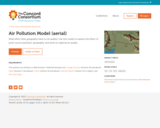
What effect does geography have on air quality? Use this model to explore the effect of point-source pollution, geography, and wind on regional air quality.

What causes an area to have poor air quality? Use this model to explore the connections between pollution sources, weather, geography, and air quality. Discover which weather condition causes the development of additional air pollutants. Compare the effects of two different pollution sources, pollution-control devices, and changing weather conditions on the air quality over a city.
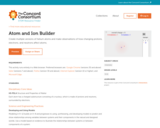
Create multiple versions of helium atoms and make observations of how changing protons, electrons, and neutrons affect atoms.
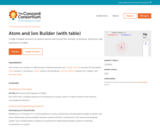
Create multiple versions of various atoms and record the number of protons, electrons, and neutrons in a table.

Attractive forces between particles play a role in the properties of the three states of matter. The strength of the attractive force between particles is one factor that determines if a particular substance will be a solid, liquid, or gas. Vary the strength of the attractive force between particles in this model. Note that for a real substance, the strength does not vary, but this model shows how the strength of the attractive force determines the state of matter if the temperature is fixed.

Modeling traffic data is important for urban planning, creating transportation systems, and even predicting how much foot traffic a retail store can expect in a given day. This genre of dynamic data science activities could be classified as “finding a needle in a haystack,” giving students a chance to mine big data to make insights about traffic use. According to the Bay Area Rapid Transit District, about 400,000 people used the BART system daily in 2018. In BARTy, students investigate BART data from 2015 to learn about passenger use and explore traffic patterns.

This model allows you to explore why polar and non-polar substances have very different boiling points. While all molecules are attracted to each other, some attractions are stronger than others. Non-polar molecules are attracted through a London dispersion attraction; polar molecules are attracted through both the London dispersion force and the stronger dipole-dipole attraction. The force of attractions between molecules has consequences for their interactions in physical, chemical and biological applications.

Explore the relationships between properties of molecules, temperature, and movement of particles.

Adjust the initial velocity of a third atom as it hits two bonded atoms and track the changes in energy during this interaction.
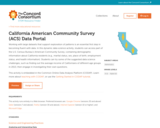
Working with large datasets that support exploration of patterns is an essential first step in becoming fluent with data. In this dynamic data science activity, students can access part of the U.S. Census Bureau’s American Community Survey, containing demographic information about California residents (e.g., marital status, sex, place of birth, employment status, and health information). Students can try some of the suggested data science challenges, such as finding out the average income of Californians of different age groups in 2013, then engage in investigating their own questions.
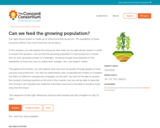
Our agricultural system is made up of interconnected resources. The availability of these resources affects how much food we can produce. In this module, you will explore the resources that make up our agricultural system in order to answer the question: can we feed the growing population? Food production is faced with an ever-growing number of challenges. Growing enough food depends on the availability of resources such as arable land, sunlight, rain, and organic matter. Throughout this activity, you will explore land uses and soil quality through graphs of land use and crop production. You will run experiments with computational models to compare the effect of different management strategies on the land. You will not be able to answer the module's framing question at the end of the module, but you will be able to describe how humans can maintain and replenish important resources to be able to produce food long into the future.
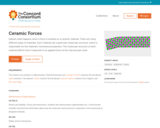
Explore what happens when a force is exerted on a ceramic material. There are many different types of materials. Each material has a particular molecular structure, which is responsible for the material's mechanical properties. The molecular structure of each material affects how it responds to an applied force at the macroscopic level.
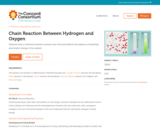
Observe how a chemical reaction evolves over time and affects the balance of potential and kinetic energy in the system.

Explore the relationship between charge, electric fields, and forces on objects by manipulating charge.
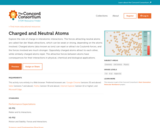
Explore the role of charge in interatomic interactions. The forces attracting neutral atoms are called Van der Waals attractions, which can be weak or strong, depending on the atoms involved. Charged atoms (also known as ions) can repel or attract via Coulomb forces, and the forces involved are much stronger. Oppositely charged atoms attract to each other, while similarly charged atoms repel. The attractive forces between atoms have consequences for their interactions in physical, chemical and biological applications.
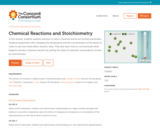
In this activity, students explore reactions in which chemical bonds are formed and broken. Students experiment with changing the temperature and the concentration of the atoms in order to see how these affect reaction rates. They also learn how to communicate what happens during a chemical reaction by writing the ratios of reactants and products, known as stoichiometry.

Explore the energy exchange between colliding objects and observe how energy transfer occurs under various circumstances.